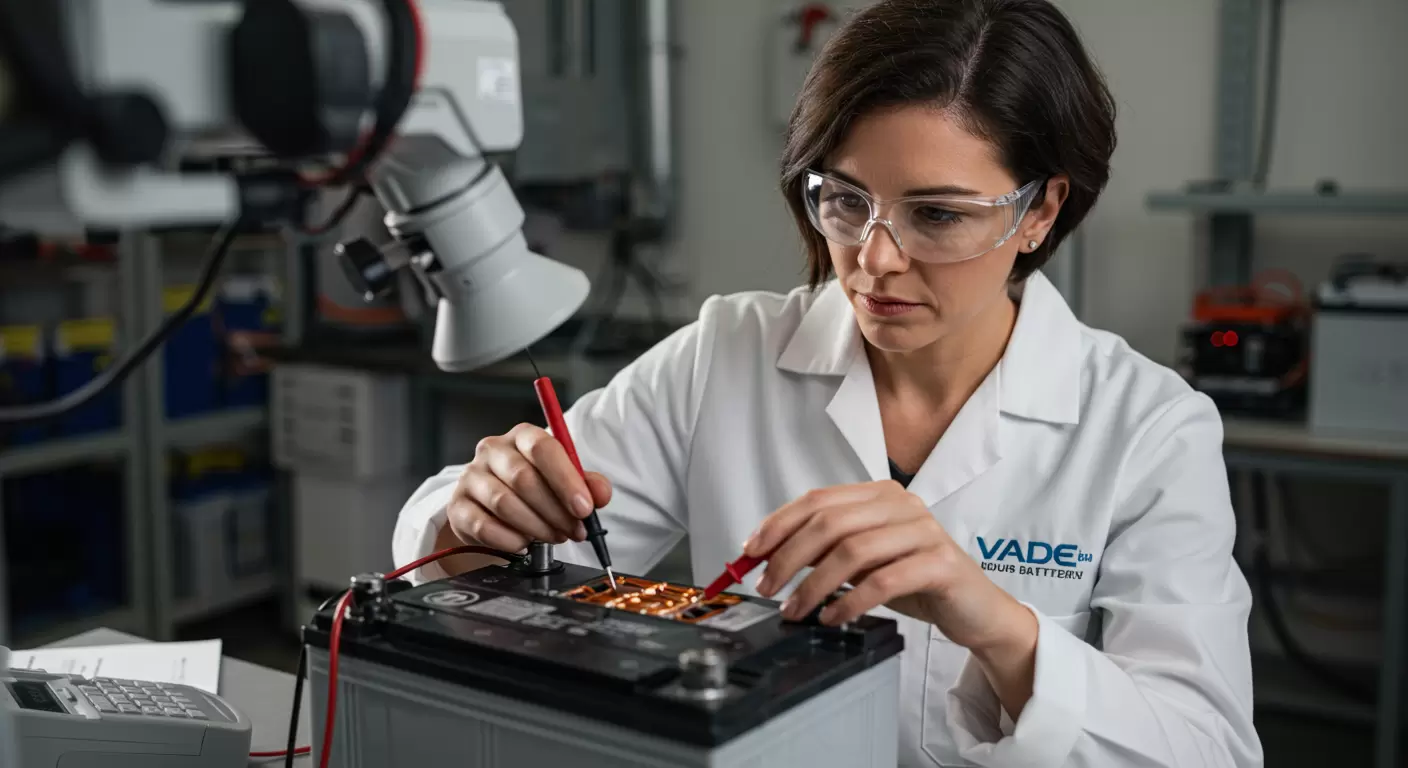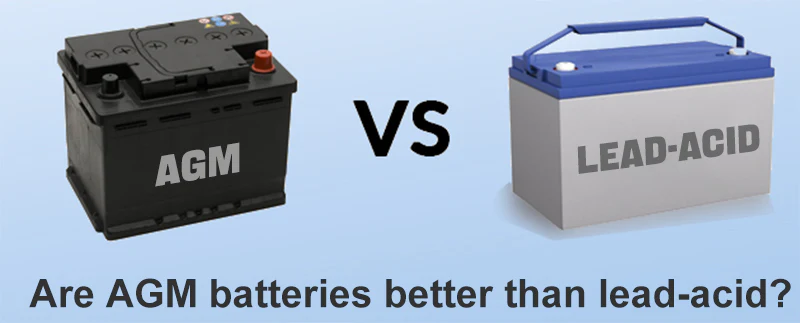-
29 W. Pawnee, Bloomfield, NJ 07003
AGM Battery vs Lead Acid: The Ultimate Comparison Guide for 2025
AGM (Absorbed Glass Mat) and traditional lead acid batteries serve distinct purposes in the power storage landscape. This comprehensive guide examines the critical differences between these two battery technologies, their performance characteristics, and optimal applications to help you make informed decisions for your specific power requirements.
What is an AGM Battery?
AGM batteries represent an advanced lead-acid technology featuring fiberglass mats positioned between lead plates that absorb the electrolyte solution. This design creates a spill-proof, maintenance-free battery that delivers enhanced performance across multiple applications.

I’ve found that AGM batteries excel in situations requiring high reliability and performance. The absorbed electrolyte design prevents leakage while enhancing both safety and durability for demanding applications.
What is a Lead Acid Battery?
Traditional lead acid batteries are the most common battery type in automotive applications. They contain lead plates submerged in a liquid sulfuric acid electrolyte that creates electricity through chemical reactions.
We see lead acid batteries powering countless vehicles and backup systems worldwide. Their simple construction features six separate cells with positive and negatively charged plates submerged in liquid electrolyte solution.
Key Differences Between AGM and Lead Acid Batteries

Construction and Design
The fundamental difference between these battery types lies in their internal construction. AGM batteries use a glass mat separator to immobilize the electrolyte between plates, while lead acid batteries contain freely flowing liquid electrolyte.
This design difference significantly impacts performance and application suitability. The immobilized electrolyte in AGM batteries creates a more stable internal environment that resists vibration and prevents spillage.
Performance and Efficiency
AGM batteries deliver superior performance across several metrics compared to traditional lead acid batteries. They offer higher power output due to lower internal resistance, with AGM batteries having internal resistance as low as 2% compared to 10-15% for lead acid batteries.
We’ve observed that AGM batteries maintain stable voltage throughout their discharge cycle. This consistent power delivery makes them ideal for applications requiring reliable performance even during high-drain situations.
Charging Capabilities
One of the most significant advantages of AGM batteries is their faster charging capability. The low internal resistance allows AGM batteries to accept and deliver higher charging currents more efficiently.
I’ve found that AGM batteries charge up to five times faster than traditional lead acid batteries. This rapid recharge capability makes them ideal for applications with frequent charge/discharge cycles, such as start-stop vehicle systems.
Lifespan and Durability
AGM batteries typically offer a longer service life than conventional lead acid batteries. A quality AGM battery can last 5-7 years, while lead acid batteries generally last 3-4 years under similar conditions.
The enhanced durability stems from AGM’s superior construction. Their resistance to vibration, shock, and temperature extremes makes them particularly suitable for vehicles operating in harsh environments or with high electrical demands.
Maintenance Requirements
When comparing maintenance needs, AGM batteries have a clear advantage. They’re completely maintenance-free, requiring no water additions or regular servicing throughout their lifespan.
Traditional lead acid batteries demand periodic maintenance, including checking and topping off electrolyte levels. This maintenance requirement can be inconvenient for applications where battery access is limited or time-consuming.
Safety Features
Safety is a critical consideration for any battery application. AGM batteries offer significant safety advantages due to their sealed, spill-proof design and minimal gas emission during charging.
We emphasize safety in all our battery recommendations at VADE Battery. The leak-proof construction of AGM batteries makes them suitable for installation in various positions and in enclosed spaces where ventilation might be limited.
Cost Considerations
Initial cost represents one of the few areas where traditional lead acid batteries maintain an advantage. Lead acid batteries typically cost one-third to one-half the price of comparable AGM batteries.
However, the total cost of ownership often favors AGM batteries. Their longer lifespan, reduced maintenance requirements, and superior performance can offset the higher initial investment for many applications.
When to Choose AGM Batteries
Based on our experience at VADE Battery, AGM batteries are the superior choice for several specific applications. They excel in high-performance vehicles, deep cycle applications, and situations requiring maintenance-free operation.
I recommend AGM batteries for marine applications, RVs, off-road vehicles, and modern vehicles with high electrical demands. Their vibration resistance and spill-proof design make them ideal for these challenging environments.
When to Choose Lead Acid Batteries
Traditional lead acid batteries remain a practical choice for certain applications where budget considerations outweigh performance requirements. They offer reliable performance at a lower initial cost point.
We often suggest lead acid batteries for standard automotive applications with minimal electrical demands and budget-sensitive projects. Their wide availability also makes them suitable for locations where specialized batteries might be difficult to source.
Our Custom Battery Solutions at VADE Battery
At VADE Battery, we specialize in custom rechargeable battery solutions including 18650, Li-ion, Lithium polymer, and LiFePO4 battery packs for global customers. Our expertise extends beyond AGM and lead acid technologies to the latest lithium-based solutions.
For applications requiring the highest energy density, longest lifespan, and most advanced performance, we recommend exploring our lithium battery options. Learn more about lithium battery basics and how lithium batteries compare to traditional options.
Conclusion: Choosing Between AGM and Lead Acid Batteries
The optimal battery choice depends on specific application requirements, operating conditions, and budget considerations. AGM batteries provide superior performance metrics with faster charging capabilities, longer lifespan (5-7 years vs 3-4 years for lead acid), and maintenance-free operation at a higher initial investment. Lead acid batteries offer reliable performance with lower upfront costs, making them suitable for standard applications with minimal electrical demands.
When evaluating battery options, consider these key factors:
- Application environment (vibration, temperature extremes)
- Discharge/charge cycle frequency
- Maintenance accessibility
- Initial budget vs. long-term cost efficiency
- Power output requirements
Understanding these differences enables power system designers, vehicle owners, and facility managers to select the battery technology that delivers optimal performance for their specific requirements.

